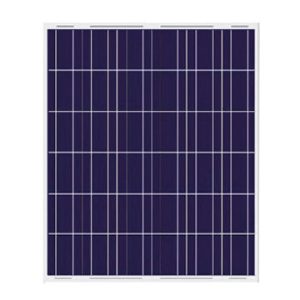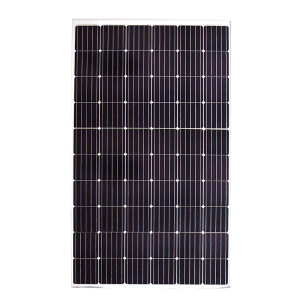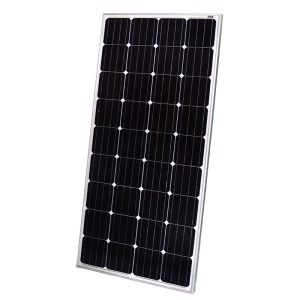Installing a solar energy system is an excellent investment for homeowners looking to reduce their carbon footprint and save money on electricity bills. A 28kW solar system is a popular choice for many households, offering substantial energy production and long-term cost savings. In this comprehensive guide, we’ll explore the benefits of a 28kW solar system, factors to consider when sizing your system, and strategies to maximize your savings.
The Benefits of a 28kW Solar System
A 28kW solar system is a significant installation capable of generating a substantial amount of electricity. Here are some key advantages of investing in a system of this size:
Substantial Energy Production
One of the primary benefits of a 28kW solar system is its ability to produce a significant amount of electricity. On average, a system of this size can generate approximately 42,924 kWh of electricity per year, depending on your location and the amount of sunlight exposure. This level of energy production can offset a large portion of your household’s electricity consumption, leading to substantial savings on your utility bills.
Long-Term Cost Savings
While the upfront cost of a 28kW solar system can be significant, ranging from $32,200 to $49,000 , the long-term savings make it a worthwhile investment. With a typical payback period of 7.5 to 9.4 years , you can enjoy free electricity for the remaining 15-20 years of your system’s lifespan, resulting in significant cost savings over time.
Reduced Environmental Impact
By generating your own clean energy, a 28kW solar system can significantly reduce your household’s carbon footprint. This not only benefits the environment but also aligns with the growing demand for sustainable living practices, making it an attractive choice for eco-conscious homeowners.
Factors to Consider When Sizing Your Solar System
Choosing the right size for your solar system is crucial to maximize your savings and ensure optimal performance. Here are some key factors to consider:
Energy Consumption
The first step in sizing your solar system is to determine your household’s energy consumption. Review your past electricity bills to understand your average monthly and annual usage. This information will help you determine the appropriate system size to offset your energy needs.
For example, if your annual electricity consumption is around 30,000 kWh, a 28kW solar system could potentially cover a significant portion of your energy needs, reducing your reliance on the grid and maximizing your savings.
Roof Space and Orientation
The available roof space and orientation play a significant role in determining the size of your solar system. Ideally, your roof should have ample unshaded space facing south (in the northern hemisphere) or north (in the southern hemisphere) to maximize sun exposure.
A 28kW solar system typically requires approximately 1,800-2,200 square feet of roof space, depending on the efficiency of the solar panels used.
Panel Efficiency
The efficiency of the solar panels you choose will impact the overall system size required. Higher-efficiency panels can generate more electricity per square foot, potentially reducing the number of panels needed and the overall system size.
For instance, using high-efficiency monocrystalline solar panels with an efficiency rating of around 20% could reduce the number of panels required for a 28kW system compared to using less efficient polycrystalline panels.
Peak Sun Hours
The amount of sunlight your location receives, measured in peak sun hours, will also influence the size of your solar system. Areas with higher peak sun hours will require a smaller system to generate the same amount of electricity as areas with lower peak sun hours.
For example, if your location receives an average of 5 peak sun hours per day, a 28kW solar system could produce around 140 kWh of electricity daily, while in an area with 7 peak sun hours, the same system could generate approximately 196 kWh per day.
Future Energy Needs
When sizing your solar system, consider your future energy needs as well. If you plan to add electric vehicles or make other energy-intensive upgrades to your home, you may want to install a larger system to accommodate these future demands.
By accounting for potential increases in energy consumption, you can ensure that your solar system remains capable of meeting your household’s needs for years to come.
Tips to Maximize Your Savings with a 28kW Solar System
Once you’ve installed your 28kW solar system, there are several strategies you can implement to further maximize your savings:
Keep Panels Clean and Clear of Debris
Dirt, dust, and other debris can accumulate on solar panels over time, reducing their efficiency by blocking sunlight. Schedule regular cleanings (at least once or twice a year) to ensure your system operates optimally.
Keeping your solar panels clean can improve their energy production by up to 5%, translating to significant savings over the lifespan of your system.
Minimize Shading
Shade significantly reduces the amount of energy produced by solar panels – even small areas of shade can have a significant impact. Be sure to install panels in locations free from shading caused by trees, buildings, or other obstructions for maximum efficiency.
Shading can reduce the output of a solar panel by up to 80%, so it’s crucial to position your panels in areas with minimal shading throughout the day.
Install Energy-Efficient Appliances
To further reduce electricity consumption and enhance the benefits of your solar energy system, consider replacing older appliances with those that are ENERGY STAR certified or come with high-efficiency ratings. Power-saving strategies include using LED lightbulbs throughout the house or installing smart thermostats to better manage heating and cooling.
By reducing your overall energy consumption, you can maximize the impact of your solar system and potentially offset a larger portion of your electricity needs.
Use Solar-Generated Electricity Wisely
Solar systems produce varying amounts of electricity throughout daylight hours; maximizing these fluctuations can save utility charges by using appliances during peak production periods when possible – for example, running the dishwasher or doing laundry during the sunniest hours of the day.
By aligning your energy-intensive activities with the peak production times of your solar system, you can further reduce your reliance on grid electricity and increase your savings.
Monitor System Performance
An essential part of maximizing your solar energy potential involves regularly monitoring your system’s performance to ensure it’s operating at optimal levels. Most solar inverters have connected software accessible through smartphones or computers that provide real-time performance data, including electricity production, consumption, and potential issues with the system.
Regularly monitoring your system’s performance can help you identify and address any issues promptly, ensuring that your solar panels are operating at their full potential.
Utilize Energy Storage Solutions
If your location experiences frequent power outages or has high time-of-use electricity rates, investing in a solar battery storage solution can help you maximize your solar energy usage and save on utility costs. By storing excess solar energy produced during the day for use during periods of low production or high electricity demand, you can further reduce reliance on grid electricity and increase savings.
Adding a battery storage system to your 28kW solar installation can provide backup power during outages and allow you to take advantage of time-of-use rates, further enhancing your cost savings.
Find Financial Incentives and Rebates
Your home’s solar energy potential is also impacted by the overall cost of equipment and installation. Be sure to research available financial incentives in the form of tax credits, rebates through local utility companies, or even community-based group purchasing discounts to further cut down on installation costs and increase your return on investment.
Taking advantage of financial incentives and rebates can significantly reduce the upfront cost of your solar system, making it a more affordable investment and increasing your long-term savings.
By following these tips and strategies, you can ensure that your 28kW solar system operates at peak efficiency, maximizing your energy production and cost savings over the system’s lifespan.
Conclusion
Investing in a 28kW solar system for your home is a smart choice for homeowners looking to reduce their carbon footprint and save money on electricity bills. With substantial energy production capabilities and long-term cost savings, a system of this size can provide significant benefits. By carefully considering factors such as energy consumption, roof space, and panel efficiency, you can size your system appropriately and maximize your savings. Additionally, implementing strategies like regular panel maintenance, minimizing shading, and utilizing energy storage solutions can further enhance your system’s performance and cost-effectiveness.
If you’re ready to take the leap into solar energy and maximize your savings with a 28kW solar system, contact Solar Exporters today. Our team of experts can guide you through the process, from system design and installation to ongoing maintenance and support, ensuring you get the most out of your investment.
Remember, investing in a solar energy system is not only a financially wise decision but also a step towards a more sustainable future for you and your family. Embrace the power of the sun and start saving today!



